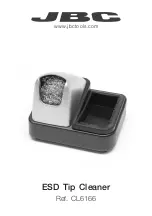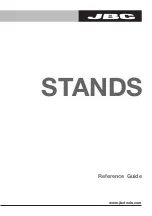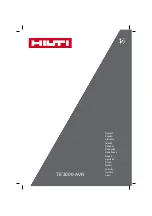
11
6/11 REV 10/14
S/N: 1324 AND ABOVE
PLEASE CONTACT GAGE BILT FOR ALL OTHER SERIAL NUMBERS.
FIRST AID MEASURES
Eye:
No specific first aid measures are required. As a precaution, remove contact lenses, if worn, and flush eyes with water.
Skin:
No specific first aid measures are required. As a precaution, remove clothing and shoes if contaminated. To remove
the material from skin, use soap and water. Discard contaminated clothing and shoes or thoroughly clean before reuse.
Ingestion:
No specific first aid measures are required. Do not induce vomiting. As a precaution, get medical advice.
Inhalation:
No specific first aid measures are required. If exposed to excessive levels of material in the air, move the
exposed person to fresh air. Get medical attention if coughing or respiratory discomfort occurs.
Note to Physicians:
In an accident involving high-pressure equipment, this product may be injected under the skin. Such
an accident may result in a small, sometimes bloodless, puncture wound. However, because of its driving force, material
injected into a fingertip can be deposited into the palm of the hand. Within 24 hours, there is usually a great deal of
swelling, discoloration, and intense throbbing pain. Immediate treatment at a surgical emergency center is recommended.
FIRE
Leaks/ruptures in high pressure system using materials of this type can create a fire hazard when in the vicinity of ignition
sources (eg. open flame, pilot lights, sparks, or electric arcs).
FLAMMABLE PROPERTIES:
Flashpoint:
(Cleveland Open Cup) 178 °C (352 °F) Minimum
EXTINGUISHING MEDIA:
Use water fog, foam, dry chemical or carbon dioxide (CO2) to extinguish flames.
PROTECTION OF FIRE FIGHTERS:
Fire Fighting Instructions:
This material will burn although it is not easily ignited. See Section 7 for proper handling and
storage. For fires involving this material, do not enter any enclosed or confined fire space without proper protective equipment,
including self-contained breathing apparatus.
Combustion Products:
Highly dependent on combustion conditions. A complex mixture of airborne solids, liquids, and
gases including carbon monoxide, carbon dioxide, and unidentified organic compounds will be evolved when this material
undergoes combustion.
ACCIDENTAL RELEASE MEASURES
Protective Measures:
Eliminate all sources of ignition in vicinity of spilled material.
Spill Management:
Stop the source of the release if you can do it without risk. Contain release to prevent further
contamination of soil, surface water or groundwater. Clean up spill as soon as possible. Use appropriate techniques such
as applying non-combustible absorbent materials or pumping. Where feasible and appropriate, remove contaminated soil.
Place contaminated materials in disposable containers and dispose of in a manner consistent with applicable regulations.
ECOLOGICAL INFORMATION
Waste disposal:
In accordance with all environmental regulations applicable to your area.
Spillage:
Prevent entry into drains, sewers and water course. Soak up with diatomaceous earth or other inert material.
Store in appropriate container for disposal.
Ecotoxocity:
This material is expected to be harmful to aquatic organisms and may cause long-term adverse effects in
the aquatic environment. The ecotoxicity hazard is based on an evaluation of data for the components or a similar material.
HANDLING
Precautionary Measures:
DO NOT USE IN HIGH PRESSURE SYSTEMS in the vicinity of flames, sparks and hot
surfaces. Use only in well ventilated areas. Keep container closed. Keep out of the reach of children.
General Handling Information:
Avoid contaminating soil or releasing this material into sewage and drainage systems and
bodies of water.
Static Hazard:
Electrostatic charge may accumulate and create a hazardous condition when handling this material. To
minimize this hazard, bonding and grounding may be necessary but may not, by themselves, be sufficient. Review all
operations which have the potential of generating and accumulating an electrostatic charge and/or a flammable atmosphere
(including tank and container filling, splash filling, tank cleaning, sampling, gauging, switch loading, filtering, mixing,
agitation, and vacuum truck operations) and use appropriate mitigating procedures.
DISPOSAL CONSIDERATIONS
Use material for its intended purpose or recycle if possible. Oil collection services are available for used oil recycling or
disposal. Place contaminated materials in containers and dispose of in a manner consistent with applicable regulations
.
DEXRON® III OIL SAFETY DATA































